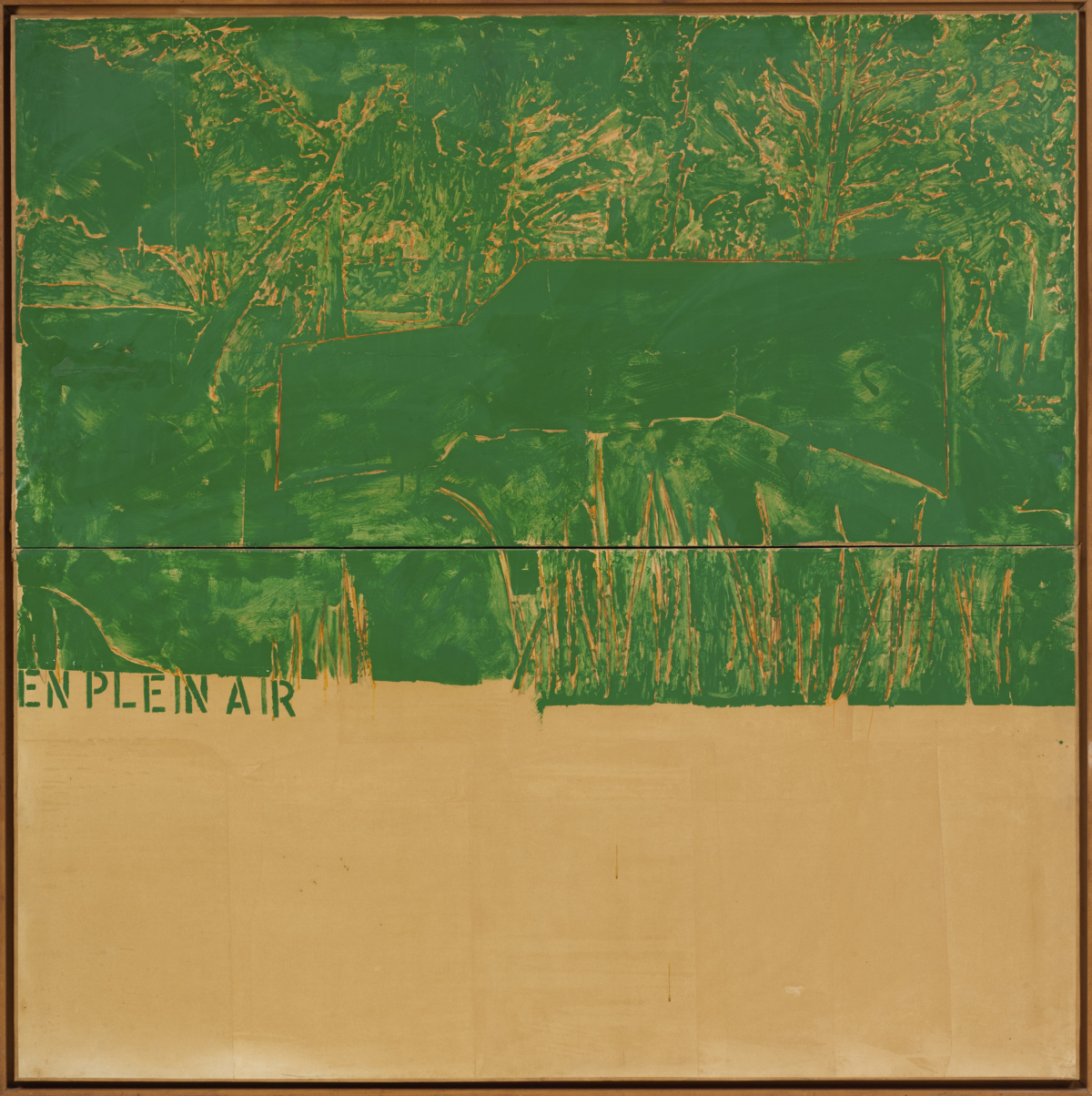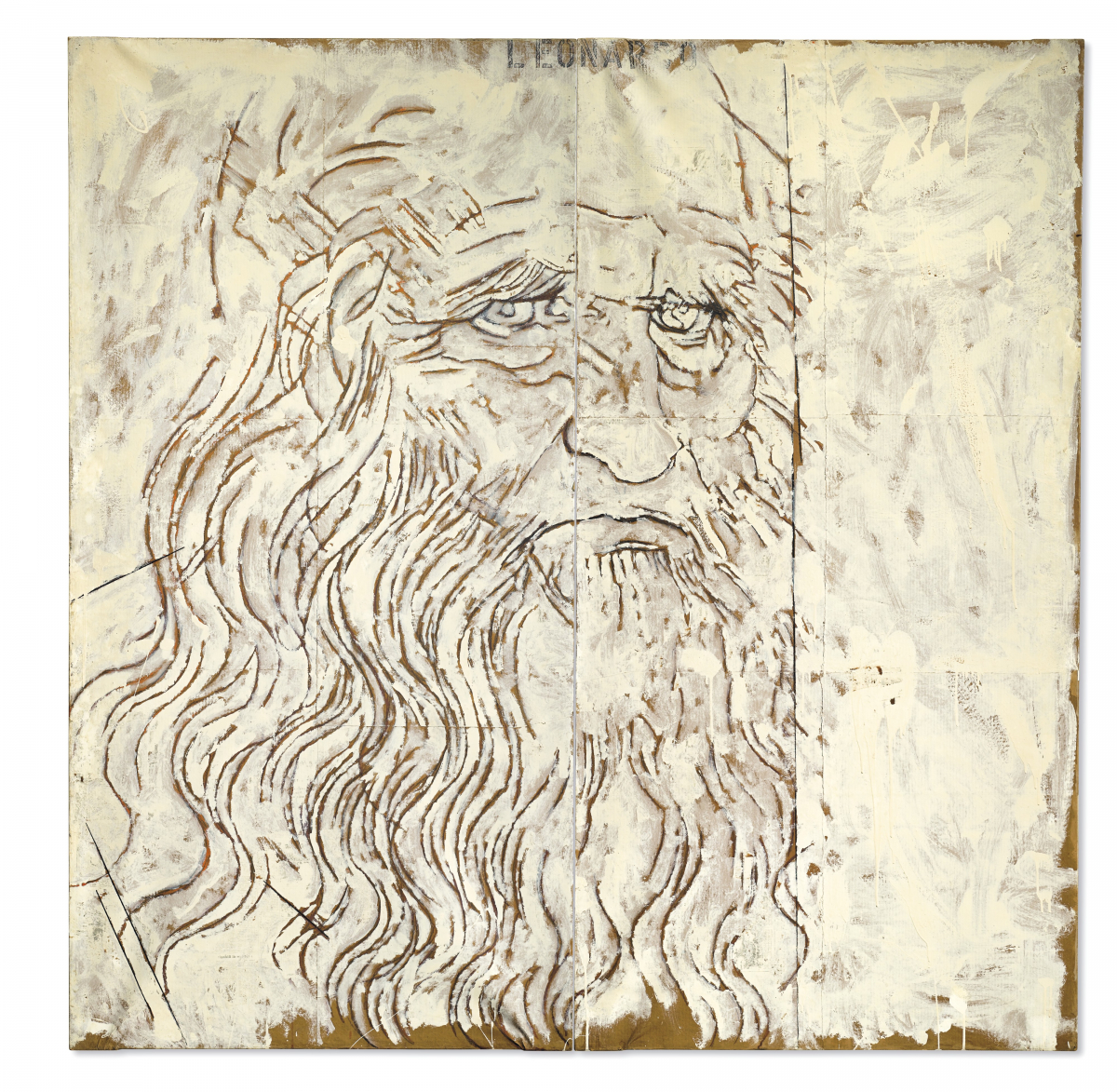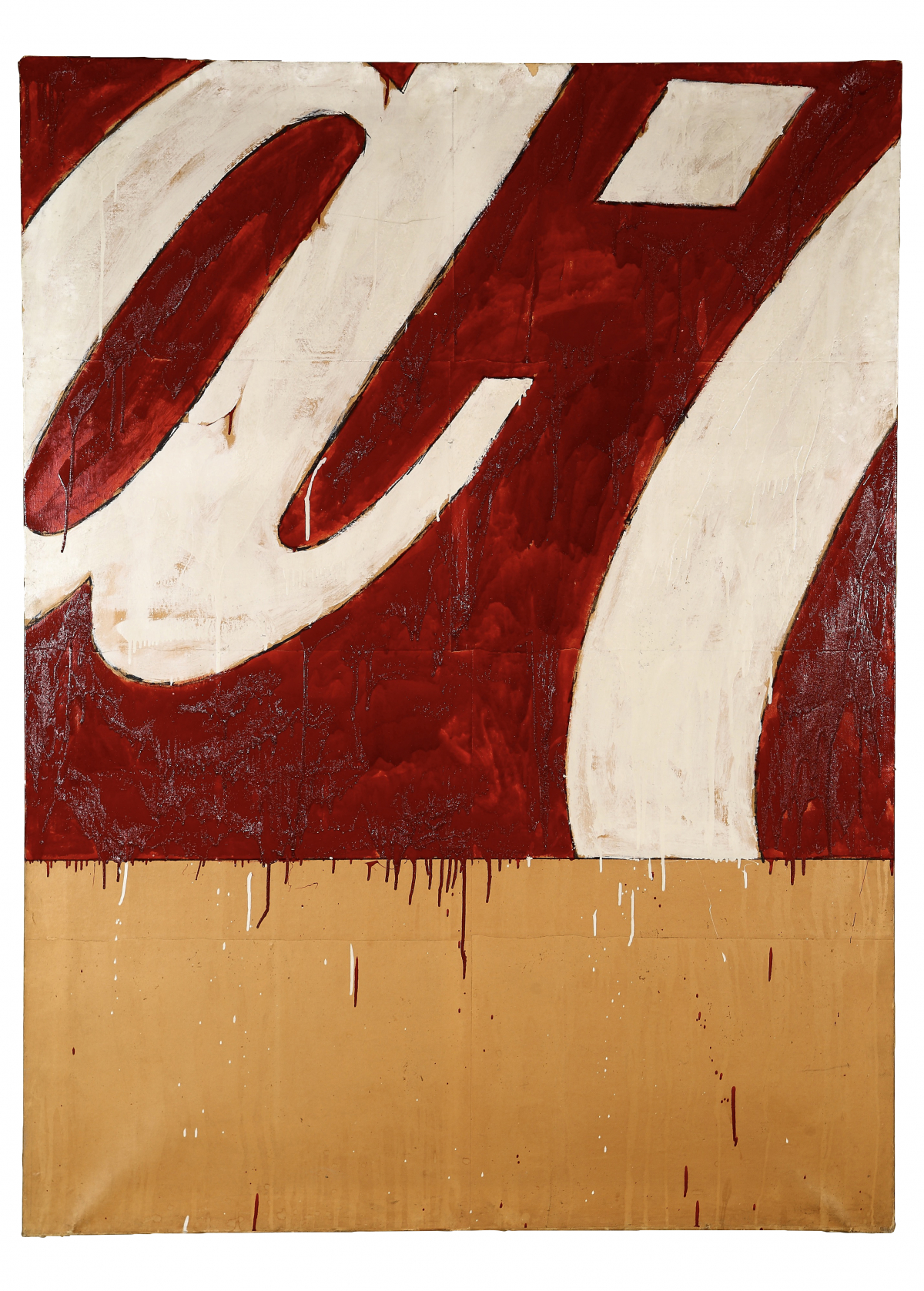
At a time when we are all missing travel, I got to not only to take a quick trip to Italy, but also back in time to the '60s. No, this was not feet of magic, but rather a visit to the Center For Italian Modern Art to see the work of Mario Schifano 1960-1965. Schifano actually visited New York during this period because of his interest in the contemporary art scene here. This interest didn’t anchor him America and he would have a major impact on the Italian art world. I had a chance to talk with Genevieve Martin, the centers Managing Director and the shows curator, Francesco Guzzetti, Ph.D., the 2019–20 Postdoctoral Fellow at the Morgan Library and Museum’s Drawing Institute, and former CIMA Fellow (2014–15), to discuss the artist and the Center For Italian Modern Art.
Kathleen Cullen: Let's start with an update of the mission of The Center For Italian Modern Art and how people can arrange to visit at this time?
Genevieve Martin: The Center for Italian Modern Art (CIMA) is a 501c3 public nonprofit exhibition and research center established in 2013 in New York City to promote public appreciation and advance the study of modern and contemporary Italian art in the United States and internationally. We're founded on a legacy in community building that dates to 1950 when Gianni Mattioli opened his Milan apartment to share his collection of Italian modern art with the public. Regardless of their status -- scholars, artists, and neighbors enjoyed transformative encounters with extraordinary works of art. On Sundays, Gianni would even personally offer guided tours. His daughter, Laura Mattioli created CIMA to ensure that this tradition of compassion, humanity, and community could live on. Without a collection, but instilled with all these values, CIMA is safeguarding and cultivating the next generation of scholars. They travel from all over the world to study the works at CIMA and like Gianni, they welcome you to our gallery and directly share their knowledge, an espresso, and conversation.
The best way to visit CIMA is by reserving one of these fellow-guided tours. They take place on Fridays at 11 am and 2 pm by appointment. On Saturdays, we offer open hours so visitors can explore the exhibition independently between 11 am and 4 pm. Curator-guided audio tours are available at no additional cost. Since many visitors are unable to visit the show in person, we now offer fellow-guided digital tours on Sunday mornings at 11 am. Our membership program allows members to make private visits when we're closed to the public -- a museum to yourself for an hour! Throughout the season, CIMA holds special tours, events, conversations, and study days as part of its programming. Discover our many offerings at italianmodernart.org
KC: Why have you decided to bring the work of Schifano from this period?
Francesco Guzzetti: Schifano's body of work between 1960 and 1965 -- I think -- embodies the Italian-American relationships better than any other Italian artists at that time. The diverse range of inspirations incorporated and even questioned by the artist in his paintings cover the most influential aspects of American art and culture, with special focus on the New York art scene, as it was circulating in Rome since the postwar years. Jazz music, the new tendencies of artists like Dine, Johns, Rauschenberg or Warhol, the sides of New York artistic and cultural scene that he encountered through Frank O'Hara during his first trip to NY between 1963-64, were all integrated into Schifano's unique vision of the art and culture of his time. That's why I thought that the artist's production between 1960 and 1965 could especially resonate with the NY public.

KC: We know Schifano visited New York during this time. Why did he come and how was he received? Do you think the visit impacted his work?
FG: Schifano owed the experimentation in new media, film especially, to the exposure to the underground films realized in New York. The artist saw all of them and retained a vivid impression, which would leave its imprint on the films he realized starting in 1964 when he made the film Round Trip which is included in the show at CIMA. Schifano stayed in NY for 6 months (Dec. 1963-Jun. 1964), he met all the artists he had already heard of before. His work met a sort of resistance from the reviewers and critics, but was much favored by Frank O'Hara, who wrote a poem for the catalog of Schifano's solo show at ODyssia Gallery in New York in 1964 and would collaborate with him in the most amazing work done by Schifano in New York, namely the 17 sheets of Words&Drawings. For good or bad, the reception of his works helps understand the particular kind of figuration the artist elaborated at that time, with especially resonates with the work of Larry Rivers.
KC: The exhibition also includes work by important modern artists of the time. What is the relevance in relation to Schifano and his work?
FG: The works by Rauschenberg (seven collages never exhibited or published before), Jasper Johns, and Jim Dine all come from the Sonnabend Collection Foundation. Their presence helps understand why the powerful dealer Ileana Sonnabend favored Schifano among all the artists who were based in Rome at the time when she moved there from New York. In addition, the work of these artists was much discussed among the Rome-based artists and resonates with Schifano's investigation of the materiality of the painted surface as expressed in his so-called "monochromes" realized in 1960-62.

KC: Schifano would have a long well-established career that would include music and film. What impact does his work have on the Italian art world and what do you hope the visitors to this show will take with them?
FG: Schifano would soon become a reference, a master for the younger generations of artists who revived painting and figuration in the 1980s. His use of photograph and film was also extremely influential. I hope the visitors to this show will take with them the enthusiasm for having discovered the work of an artist who still deserves to be internationally acknowledged as one of the most relevant figures bridging postwar and contemporary art, whose work anticipated many issues and practices which are still relevant today.
Credits:
En plein air, 1963 Enamel on paper on canvas 63 x 63 in (160 x 160 cm) Private Collection, Monaco © Archivio Mario Schifano ©2020 Artists Rights Society (ARS), New York / SIAE, Rome
Leonardo, 1963 Enamel on paper on canvas 78 3/4 x 78 3/4 in (200 x 200 cm) Private Collection © Archivio Mario Schifano ©2020 Artists Rights Society (ARS), New York / SIAE, Rome
Grande particolare di propaganda, 1962 Enamel on paper on canvas 74 ⅜ x 59 inches (189 x 150cm) Private Collection © Archivio Mario Schifano ©2020 Artists Rights Society (ARS), New York / SIAE, Rome
